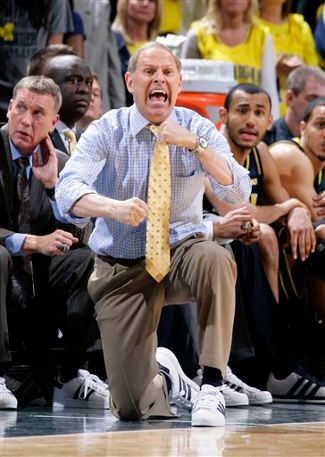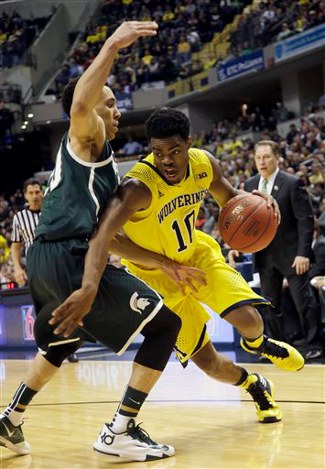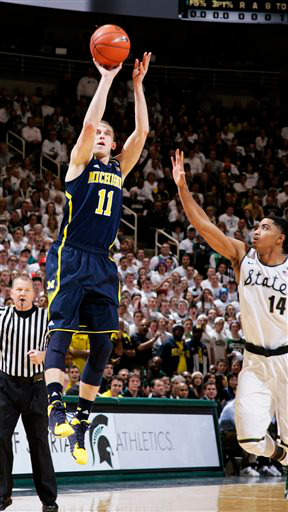NCAA Men’s Basketball Championship — Midwest Region — Third Round
[7] Texas Longhorns (24-10) vs. [2] Michigan Wolverines (26-8)
Bradley Center | Milwaukee, WI | Tip: 4:15 CT | TV: CBS
Vegas: Michigan -4.5 | Pomeroy: Michigan, 73-69 (66%)
Stop me if you’ve heard this one before. Big-name school loses its best players and has to rely on a group of sophomores and surprising freshman. Conference coach of the year honors are bestowed upon the man at the head of the bench. Hopes are high for the team to repeat their surprising run to the Final Four from the year before.
Up until that last point, Michigan and Texas have some similarities in their storylines this season. Fresh off an appearance in the national title game, the Wolverines were expecting to lean on big man Mitch McGary (No. 4) following the departures of Trey Burke and Tim Hardaway, Jr. to the NBA. Back problems cropped up for McGary during the summer, however, and the player who burst on to the national scene in last year’s NCAA tournament was limited to just eight games this year before having to shut it down.
That injury put the Wolverines at a disadvantage in the paint in a rough-and-tumble Big 10 Conference and raised some serious questions for a team that was just 8-4 in non-conference, had suffered a questionable loss to Charlotte, and whiffed on three opportunities for marquee wins. No matter, as John Beilein simply guided his team through the landmines of an unpredictable Big 10 season to a conference title that they won by a three-game margin.

John Beilein has Michigan poised for another March run
(Photo credit: Al Goldis/Associated Press) 
Derrick Walton, Jr. is a dynamic point guard
(Photo credit: AJ Mast/Associated Press) 
Nik Stauskas is a three-point marksman
(Photo credit: Al Goldis/Associated Press) |











